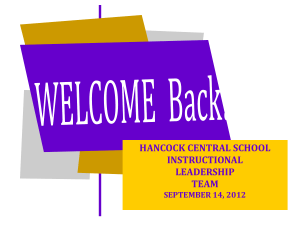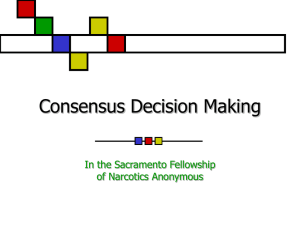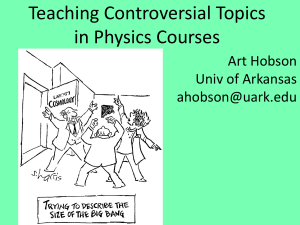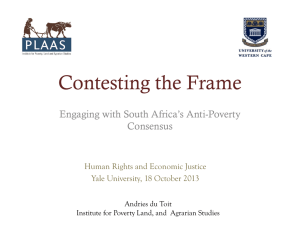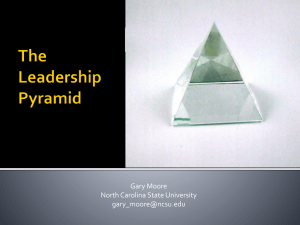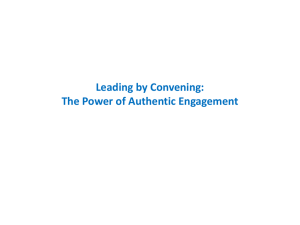Teamwork and Consensus
advertisement
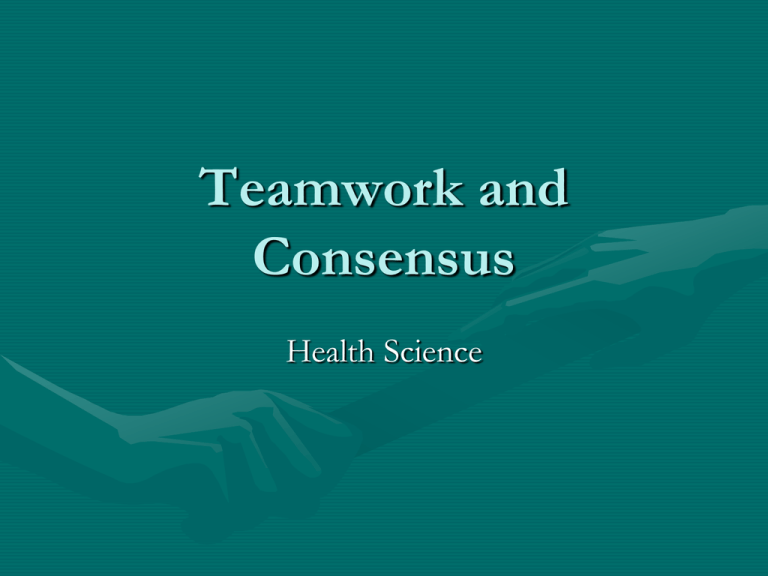
Teamwork and Consensus Health Science • Health care workers function as team members and work with people from diverse backgrounds. • Quality health care depends on the ability to work well with others. • During this lesson, you will investigate the aspects of consensus and try to utilize that as a decision-making tool. • Let’s brainstorm these questions: • When do people have to work as a team? • What happens when people don’t work as a team? • Who suffers when people don’t work as a team? • Individuals assume various roles when in a group. • Some are elected to leadership roles, such as President, Vice President, etc. • More informal roles are assumed by all group members: Information Seeker • • • • • Asks questions Looks for new ideas May sound doubtful Is willing to research topics and issues Is open to new ideas Tension Reliever • • • • Encourages risk-taking Uses humor to relieve the tension Maintains a steady, calming attitude Looks for consensus during arguments. Clarifier • Connects disparate ideas (fragments, pieces) into new “whole” ideas • Creates visual interpretations of the data • Orders and organizes discussion items • Is an analytical and critical thinker Initiator • Organizes discussion into a practical plan of action. • Is good at assigning tasks and delegating actions. • Is very goal and performance oriented. • Is always enthusiastic and positive about the future. Gatekeeper • • • • • Knows the rules in depth Watches the clock Keeps everyone in line and “on task” Challenges new ideas Needs to be convinced, especially if change is needed. Harmonizer • Serves as the group “cheerleader” • Minimizes conflicts and differences of opinion • Looks out for the feelings of all group members • Is enthusiastic and caring Follower • Wants to do something “concrete” • Waits for the “experts” to tell him/her what to do • Always supports the initiators in the group. Information Giver • Comes to all meetings with all the notes and hand-outs from previous meetings. • Is always careful to state all the pertinent facts. • Is very detail-oriented. • Never forgets information but may forget how you felt about something. • These roles are determined by personalities, qualities and values that we have as individuals. Some of these qualities include: • Trust • Sensitivity • Belief in consensus • Pride in the organization • • • • • • Value of individual differences Apprehension of diversity Promptness Organization Enthusiasm Critical Thinking Consensus • Parliamentary Procedure is the rule by majority. • Majority rule is the most effective if a consensus is reached. • The definition of consensus is a “collective opinion or concord – general agreement or accord.” There are some misunderstandings about consensus. • Consensus does not mean that everyone agrees with what is being done – it is simply a general agreement to carry on with something. • Another misunderstanding is that all team decisions should be made by consensus. • Yet another misunderstanding is that the final consensus decision reflects the first choice of each team member. • Another misunderstanding is that consensus is fast and easy. • And finally, there is a misunderstanding that consensus is compromise. General beliefs about consensus: • Consensus is a mind set as well as a process. • Consensus that is authentic requires that team members be more concerned about community and less concerned about power. • Consensus requires that the team be more focused on team productivity than on individual credit. • Consensus demands mature behavior on the part of everyone. • The recognized leader holds him/herself and others accountable for open, honest participation. • The team must be open to continuous learning in order to use consensus effectively. • In order for consensus to be a viable option, ground rules must be established and followed. Ground Rules: • Disagreement is acceptable as long as the person explains why they disagree. • Expressed differences of opinion help to expose all available alternatives. • Rigid argument for one position should be avoided; all members reactions should be heard and considered. • One should never change his/her mind to avoid conflict. Support should only be given to options that are truly accepted. • Evaluation should be suspended until all points of view are presented and understood. • Have a back-up plan in the event consensus cannot be reached. Examples of back-up plans: • No decision – idea is dropped and status quo continues. • Third party decides. • Leader decides. • Designated committee decides. • Luck decides. • Split Decision – group supporting can pilot. • Majority rules – or an agreed-upon percentage. Consensus Process • • • • • • • Issue is clarified. Discussion of the issue. Reclarify any parts of the issue. Each individual gives their stance. The minority expresses their view. The team problem-solves the minority’s view. Again, each individual gives their stance. Levels of agreement in a group: • • • • 100% consensus Sufficient consensus Democratic (majority rules) Autocratic, with input from the group. Autocratic is when the leader has unlimited power; the power to make the decision. • Totally autocratic. • Sometimes, negative behaviors and distracters emerge in group dynamics. • While this can be okay, sometimes it keeps the group from making progress or derails the group. The latecomer • Arrives late • Makes a big commotion • Wants to be caught up on everything that has happened. • Gives “reasons” why they were late. The Early Leaver • Leaves the session early. • Drains energy from the session. The Broken Record • Keeps bringing up the same point over and over. • Takes up valuable time. The Doubting Thomas • Aggressively negative • Uses phrases like “It will never work”, or “We’ve already tried that”. The Dropout • • • • • Sits at the back of the room. Doesn’t say anything. Corrects papers, reads, texts. Doesn’t participate. Disturbs the presenter more than the group. This is a HUGE distraction. The Whisperer • • • • Whispers constantly to neighbor. Irritating to the group. Breaks the concentration of the group. Can lead to feelings of distrust by the other members. The Know-It-All • Uses credentials, age, length of service or status to argue a point. • May refer back to places they have worked / been before and how they did something there. The Loud Mouth • Talks too much and too loud. • Dominates the session. • Pulls attention away from focus of the session. • Next…… • Let’s rate some qualities of effective team members.
